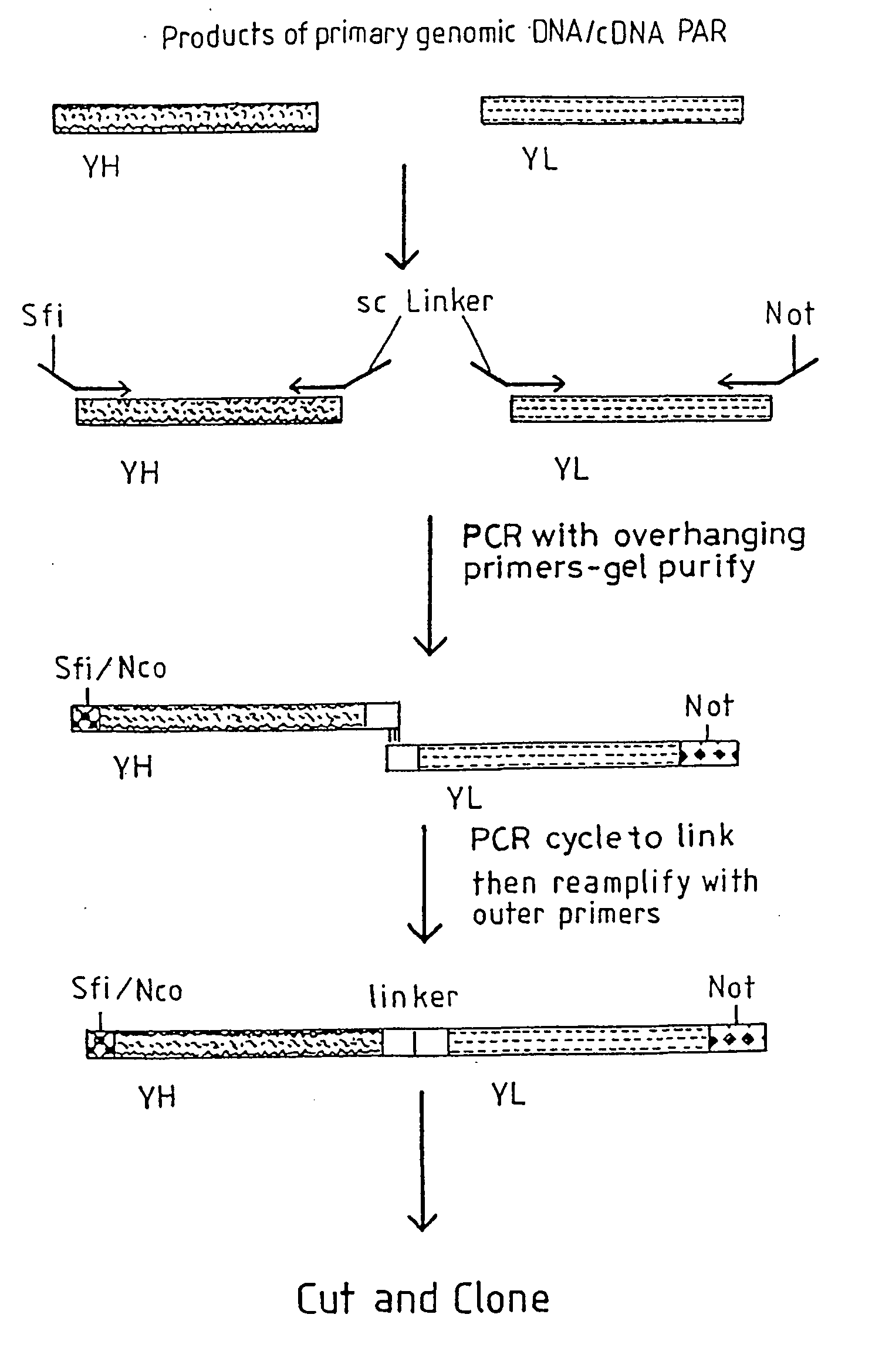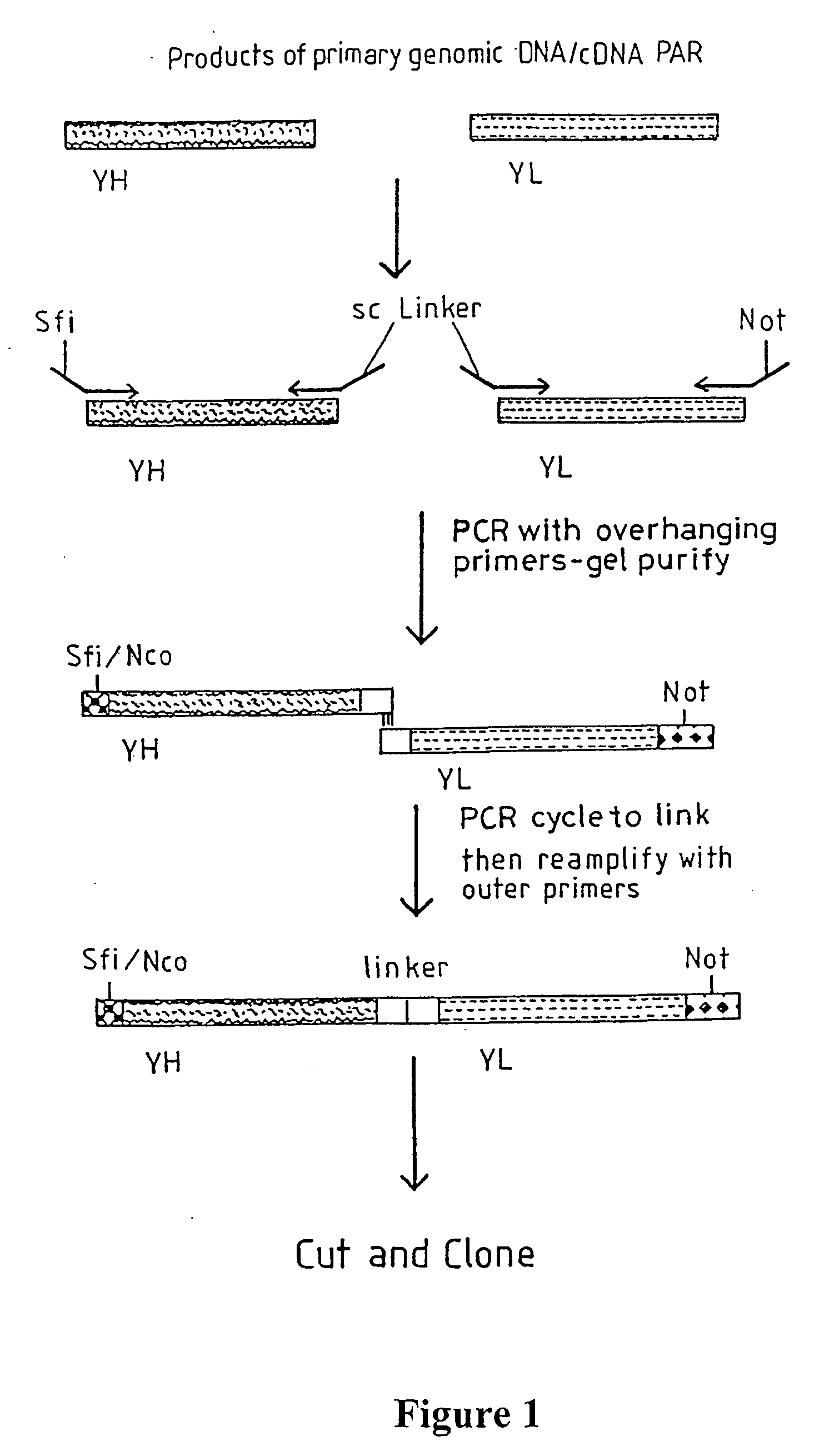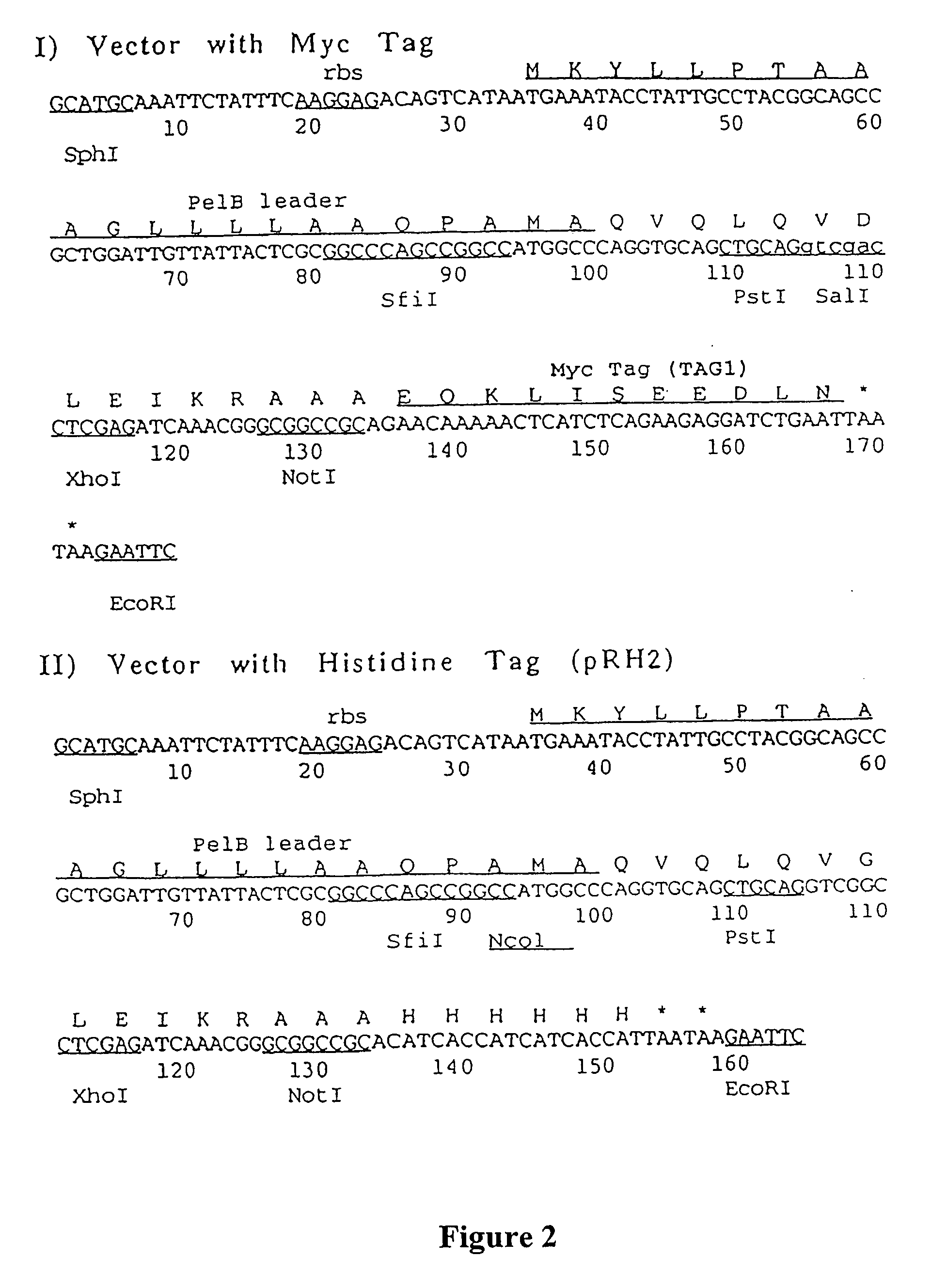Materials and methods relating to fusion proteins for inducing an immune response
a technology of fusion proteins and immune responses, applied in the field of materials and methods relating to fusion proteins for inducing an immune response, can solve the problem that pvx coat protein-based fusions were never delivered as dna into mammalian cells
- Summary
- Abstract
- Description
- Claims
- Application Information
AI Technical Summary
Benefits of technology
Problems solved by technology
Method used
Image
Examples
example 1
Indentification of V-genes from Biopsies of B-cell Lymphoma
Preparation of Biopsy Material
[0080] Biopsy specimens were obtained from five patients with pathologically confirmed Follicular Lymphoma. They were obtained during routine diagnostic procedures. The light chains were identified as kappa or lambda by immunohistochemistry. As non-malignant controls, a small bowel lymph node from a patient with Crohn's disease and a sample of spleen from a patient undergoing splenectomy were obtained. Biopsy material was prepared as a single cell suspension and the cells subsequently frozen and stored at −70° C.
Preparation of DNA for PCR
[0081] For PCR the DNA was prepared using a simple proteinase K / Tween 20 lysis method (Innis et al., 1990 PCR Protocols: A Guide to Methods and Applications; Academic Press Inc., pI47). Briefly the cells were pelleted by centrifugation for 20 seconds at 13,000 rpm in a microcentrifuge. The cells were then washed twice with 1 ml PBS before resuspending at app...
example 2
Construction of a Fusion Protein
Plasmid construction
[0097] The BamHI / ClaI env fragment (nt 6537-7674, nt numbering from Shinnick et al, 1981 Nature 293, 543-548) from pCRIP (gift from O. Danos, Danos & Mulligan 1988 PNAS 85, 6460-6464) was cloned into the BamHI / Clal backbone fragment of pZipNeoSV (X) (gift from R. Mulligan, Cepko et al., 1984 Cell 37, 1053-1062) to generate an intermediate plasmid penvBam / Cla.
[0098] A SfiI / NotI cloning site was introduced beyond the leader peptide sequence between codons corresponding to the 6th and 7th amino acids (from the N-terminus) in the mature MoMLV env polypeptide. The oligonucleotide pair envNotrev (5′-CTG CAG GAG CTC GAG ATC AAA CGG GCG GCC GCA CCT CAT CAA GTC TAT AAT ATC-3′, Seq ID No. 49, complementary to MoMLV env nts 5894-5914 with a 33nt 5′ overhang encoding a Not1 site and 21nt complementary to the 5′ tail of envSfifor) and envseq 7 (5′-GCC AGA ACG GGG TTT GGC C-3′, Seq ID No.50, reverse complement of MoMLV env nts 6581-6600) was...
example 3
Construction of a Vector Suitable for Use in Human Recipients
Vector Construction
[0119] The initial vectors used in example 2 above were based on Moloney Murine Leukaemia virus vectors and contained large stretches of unmodified viral sequences (Russell et al., 1993 Nucl. Acids Res. 21, 1081-1085). These vectors were shown to be effective in raising anti-idiotype responses and gave no untoward effects in the mice inoculated. Although there is no evidence of danger to man from such vectors it was decided to modify the vectors to avoid any potential risks. There was some concern about two features of the original vectors: the retroviral envelope gene (as it could theoretically be recombined into another retrovirus thus changing its tropism) and the packaging signal (which might allow packaging of the injected DNA into existing human retroviruses). Whilst changing the vector it was decided to incorporate changes which improve the vectors for use in man:—the promoter used to drive exp...
PUM
| Property | Measurement | Unit |
|---|---|---|
| volume | aaaaa | aaaaa |
| temperature | aaaaa | aaaaa |
| pH | aaaaa | aaaaa |
Abstract
Description
Claims
Application Information
 Login to View More
Login to View More - R&D
- Intellectual Property
- Life Sciences
- Materials
- Tech Scout
- Unparalleled Data Quality
- Higher Quality Content
- 60% Fewer Hallucinations
Browse by: Latest US Patents, China's latest patents, Technical Efficacy Thesaurus, Application Domain, Technology Topic, Popular Technical Reports.
© 2025 PatSnap. All rights reserved.Legal|Privacy policy|Modern Slavery Act Transparency Statement|Sitemap|About US| Contact US: help@patsnap.com



